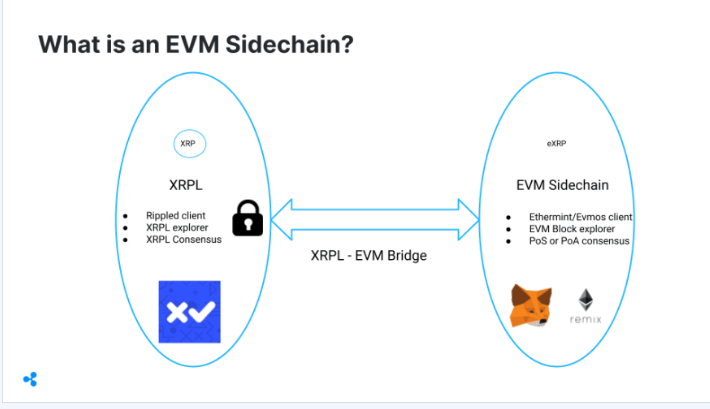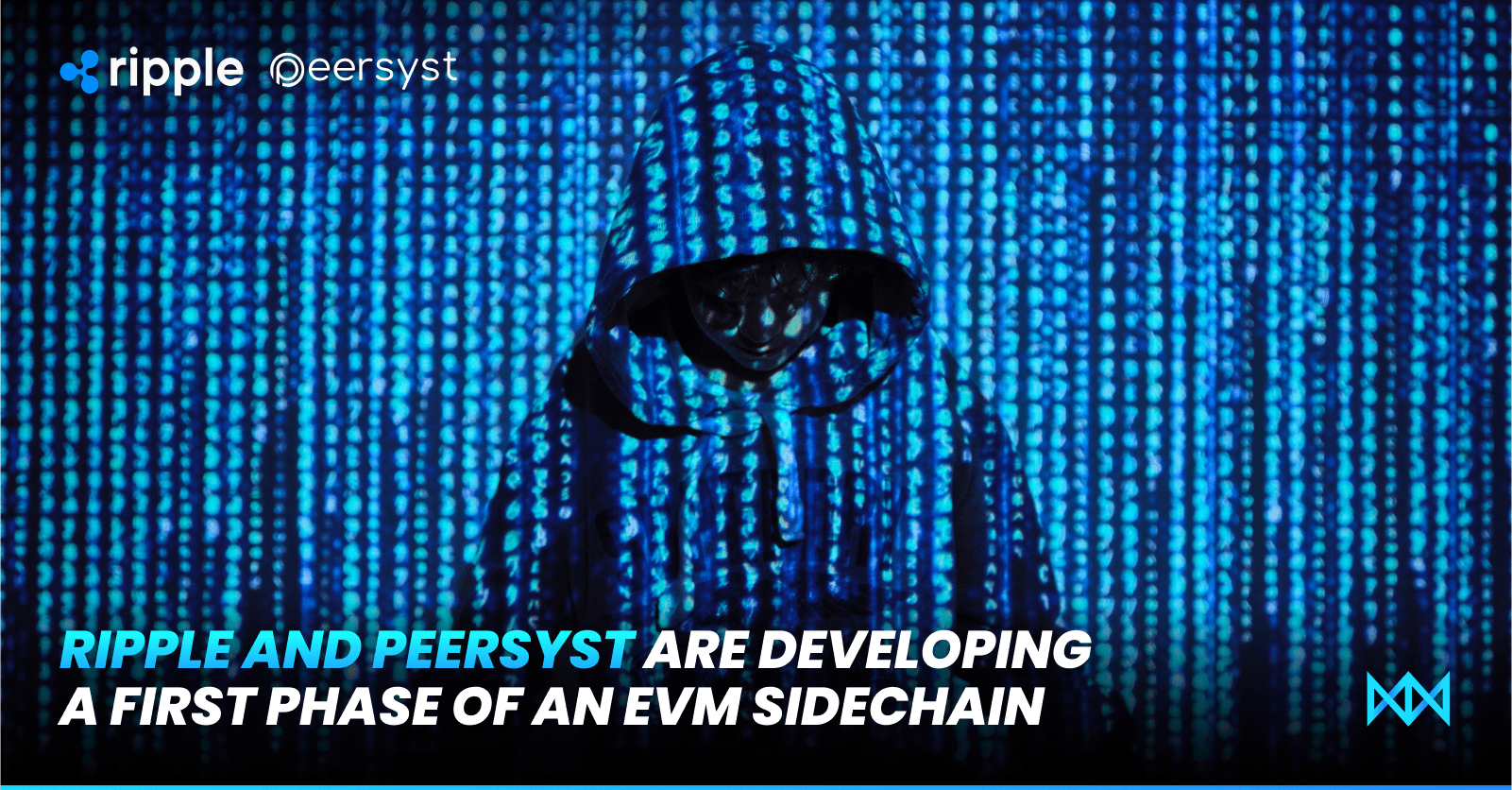Quick Summary
- In an announcement from Ripple’s core development team Ripplex, developers have announced the first step toward Ethereum Virtual Machine (EVM) compatibility.
- Developers can now assess available technologies, while deploying existing Solidity apps on the EVM sidechain, with the XRPL now available on Devnet.
PEERSYST and Ripple Core Developers reveal first phase of XRPL sidechain for EVM
It was announced on Monday, October 17, that Ripplex has introduced XRPL, a side chain based on XRP that is EVM-compatible. A distributed ledger project called XRP ranks sixth in terms of market capitalization among crypto projects. For quite some time, XRP developers have wanted the project to be compatible with smart contract processes. Some accounts say XRP developer, David Schwartz, conceived the idea back in 1988. Peersyst Technology is introducing the XRPL chain as the first phase of the EVM sidechain, according to Ripplex.
What is an EVM Sidechain?

“This first phase of the EVM sidechain is currently available for testing on the XRPL Devnet,” the announcement details. “Using a bridge, developers can test the exchange of Devnet XRP between the EVM sidechain and XRP Ledger to: (1) Assess available technologies. (2) Deploy their existing Solidity apps on the EVM sidechain and access the XRPL Devnet userbase.”
Compatibility with Ethereum’s Virtual Machine has been addressed by a handful of alternative blockchain networks during the last few years. Phase two of XRPL will start in early 2023 and it will “feature a permissionless EVM sidechain and bridge,” the blog post written by Ripplex developer Mayukha Vadari details. “The end goal is phase three: a permissionless EVM sidechain and bridge available on the XRPL Mainnet slated to follow,” Vadari’s blog post explains. According to Vadari’s blog post:
Throughout all three phases, the EVM sidechain will feature block and finality times comparable to the XRPL Mainnet and support Ethereum smart contracts and applications like Metamask, Remix, and Truffle.
Conclusion
It is great to see that progress is still being made and that projects are able to make connections with each other to create more efficient processes.
Disclaimer: This article is provided for informational purposes only. It is not offered or intended to be used as legal, tax, investment, financial, or other advice.





